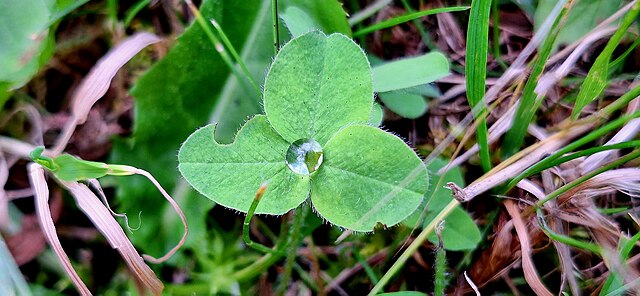A dew pond is an artificial pond usually sited on the top of a hill, intended for watering livestock. Dew ponds are used in areas where a natural supply of surface water may not be readily available. The name dew pond is first found in the Journal of the Royal Agricultural Society in 1865. Despite the name, their primary source of water is believed to be rainfall rather than dew or mist.
Typical example of downland dew pond near Chanctonbury Ring, West Sussex. 50°53′47″N 0°23′23″W / 50.896293°N 0.389756°W / 50.896293; -0.389756
Dew pond at Cockroost Hill, parish of Portslade, Sussex, showing layer of chalk rubble protecting the lining 50°51′43″N 0°14′12″W / 50.86192°N 0.2367°W / 50.86192; -0.2367
Modern examples made with portland cement need regular repair. Oxteddle Bottom, Sussex 50°52′15″N 0°02′28″E / 50.87075°N 0.04112°E / 50.87075; 0.04112
"Some people say an overhanging tree will help a pond". Dew pond on hill above West Leake Nottinghamshire. 52°50′11″N 1°12′57″W / 52.836462°N 1.215963°W / 52.836462; -1.215963
Dew is water in the form of droplets that appears on thin, exposed objects in the morning or evening due to condensation.
A drop of dew in the middle of a clover
Dew formed on the surface of strawberry leaves
A drop of dew on a Colocasia leaf at the Garden Society of Gothenburg
Dew drops on a flower








